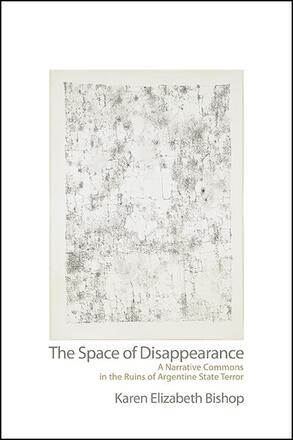
The Space of Disappearance
A Narrative Commons in the Ruins of Argentine State Terror
Alternative formats available from:
Examines the evolution of disappearance as a formal narrative and epistemological phenomenon in late twentieth-century Argentine fiction.
Description
More than thirty thousand people were forcibly disappeared during the military dictatorship that governed Argentina from 1976 to 1983, leaving behind a cultural landscape fractured by absence, denial, impunity, and gaps in knowledge. This book is about how these absences assume narrative form in late twentieth-century Argentine fiction and the formal strategies and structures authors have crafted to respond to the country's use of systematic disappearance as a mechanism of state terror. In incisive close readings of texts by Rodolfo Walsh, Julio Cortázar, and Tomás Eloy Martínez, Karen Elizabeth Bishop explores how techniques of dissimulation, doubling, displacement, suspension, and embodiment come to serve both epistemological and ethical functions, grounding new forms of historical knowledge and a new narrative commons whose work continues into the twenty-first century. Their writing, Bishop argues, recalibrates our understanding of the rich and increasingly urgent reciprocities between fiction, history, and the demands of human rights. In the end, The Space of Disappearance asks us to reexamine in fiction what we think we cannot see; there, at the limits of the literary, disappearance appears as a vital agent of resistance, storytelling, and world-building.
Karen Elizabeth Bishop is Assistant Professor of Spanish and Comparative Literature at Rutgers University–New Brunswick. She is the editor of Cartographies of Exile: A New Spatial Literacy.
Reviews
"Bishop offers fresh, new readings of works by major figures, and her particular take on disappearance as 'a constitutive component of form and narrative structure' is original and illuminating. Moreover, she provides the tools for reading disappearance in works of fiction from other parts of the world where writers have also responded to the sort of detention and disappearance that Argentina has given a name to, but that is, sadly, practiced far more widely." — Amy K. Kaminsky, author of Argentina: Stories for a Nation